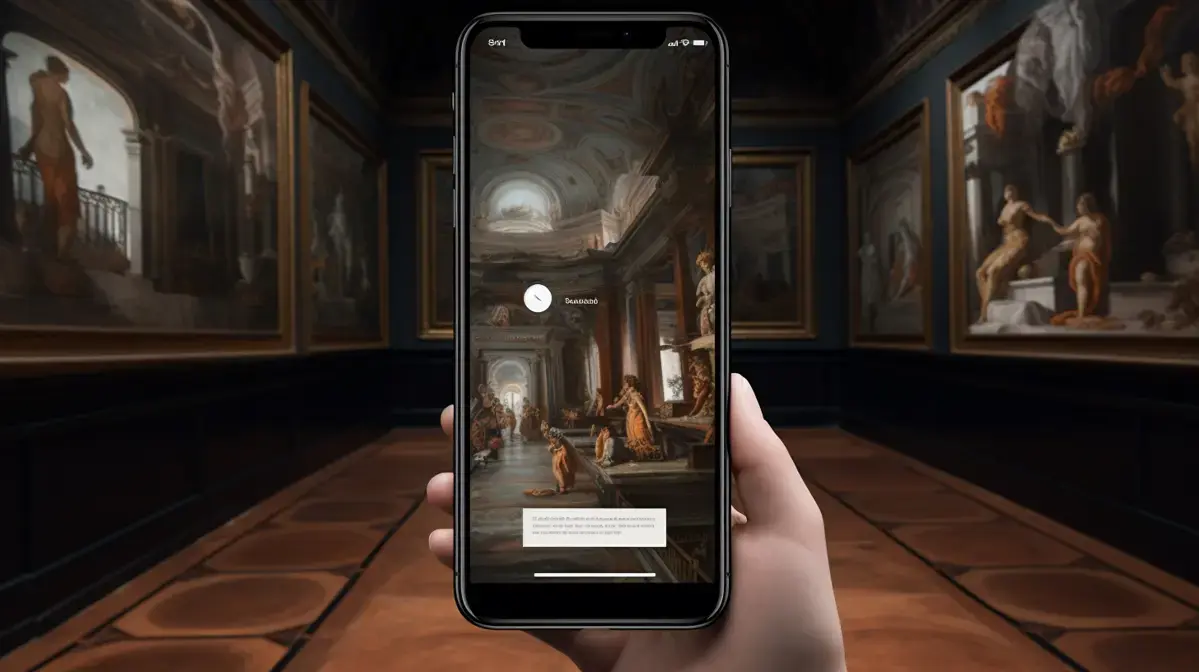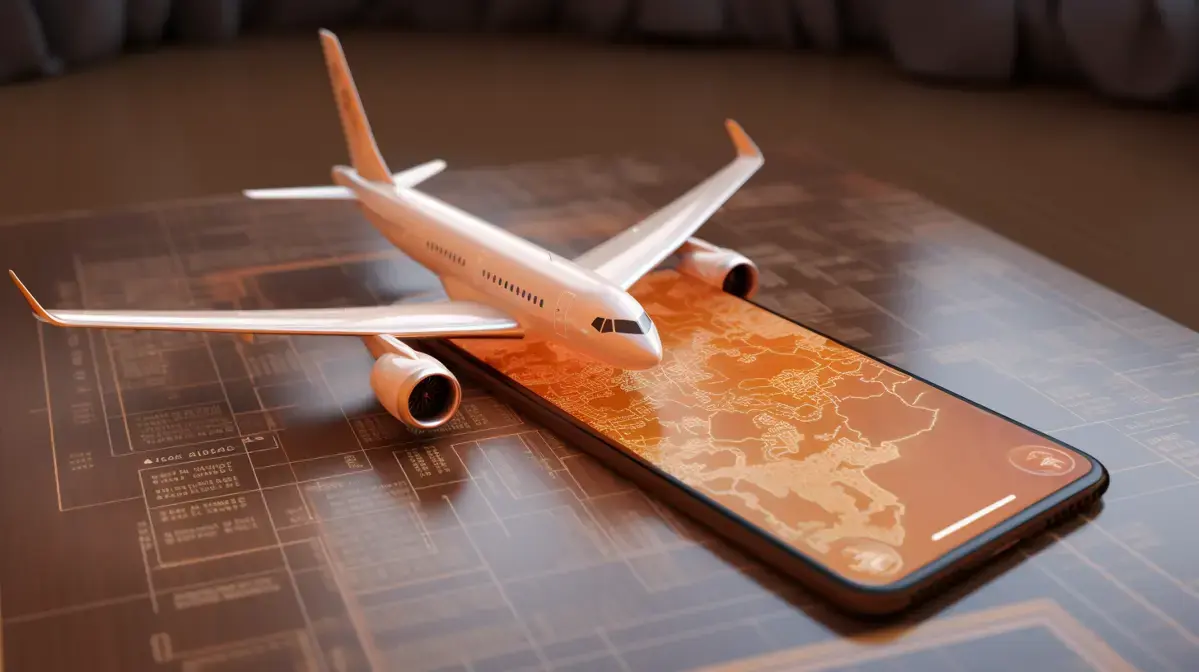Table Of Contents
- Key Points
- Introduction to Augmented Reality Technology: Definition and Concept
- The Early Days of Augmented Reality: A Brief History
- How Augmented Reality Works: An Overview of the Technology
- Interesting Facts
- Applications of Augmented Reality in Various Industries
- Advancements in Hardware for Augmented Reality Devices
- Software Development for Augmented Reality: Platforms and Tools
- FAQs
- Future Trends in the Evolution of Augmented Reality Technology
- Challenges Facing the Adoption and Integration of Augmented Reality into Society
- Key Takeaways
Augmented reality (AR) technology has come a long way since its inception in the 1960s. What started as a mere concept has now evolved into a sophisticated technology that is being used across various industries, from entertainment to healthcare.
The basic idea behind AR is to overlay digital information onto the physical world around us, creating an immersive experience for users. This can be achieved through various devices such as smartphones, tablets or specialized headsets.
One of the earliest known applications of AR was developed by computer scientist Ivan Sutherland in 1968 at Harvard University. His “Sword of Damocles” system displayed wireframe graphics onto a headset worn by users but required far too much hardware to become practical.
In recent years, advancements in mobile technologies have made it possible for anyone with a smartphone or tablet to access augmented reality experiences using apps like Pokemon Go and Snapchat filters among others.
As we move further into the future, there’s no doubt that augmented reality will continue revolutionizing how people interact with their surroundings and each other. To learn more about Augmented Reality Technology visit argeopin.com/augmented-reality/

Key Points
- The concept of Augmented Reality (AR) was first introduced in the 1960s.
- In 1992, Louis Rosenberg demonstrated the first AR system known as Virtual Fixtures.
- The advent of smartphones and tablets paved way for AR to become widely accessible to consumers.
- Currently, industries such as healthcare, gaming and retail are finding innovative ways to incorporate AR technology into their businesses.
Introduction to Augmented Reality Technology: Definition and Concept
Augmented Reality (AR) technology has rapidly grown in popularity over the years, transforming the way people interact with their environment. AR is a revolutionary concept that allows digital information to be overlaid onto the real world. It brings together virtual and real-world elements, creating an immersive experience for users.
The idea of AR is often confused with Virtual Reality (VR), but they are different concepts entirely. VR creates an entirely new digital world while AR enhances our perception of reality by making it more interactive and engaging.
It’s fascinating to think about how this technology can benefit various industries such as healthcare, education, entertainment and even tourism. Imagine being able to travel across continents from your living room or having surgery performed remotely using Augmented Reality.
As someone who has seen firsthand how this technology can transform lives through providing valuable solutions in many fields; I genuinely believe that we are just scratching the surface of what’s possible with Augmented Reality.
The Early Days of Augmented Reality: A Brief History
Augmented Reality technology is a game-changing innovation that has captured the hearts and minds of millions across the globe. This revolutionary technology enhances our perception of reality by overlaying computer-generated information on top of our physical surroundings in real-time.
Simply put, Augmented Reality (AR) makes it possible to bring digital content to life and place it within the context of our everyday lives. From education and gaming to advertising and retail, AR now permeates every facet of modern society, offering an exciting new way for people to interact with their environment.
The concept behind AR is awe-inspiring – bridging the gap between what’s real and what’s not through innovative hardware such as head-mounted displays or mobile devices equipped with cameras. One can’t help but be amazed when witnessing how virtual elements blend seamlessly into physical space in this mind-bending experience.
For instance, imagine walking down a street while wearing an AR headset that presents you with directions overlaid on your field-of-view – no need for maps or fumbling around your phone. Or consider using one’s smartphone camera app at home furnishing stores; customers can use an app that overlays furniture items onto their living room space before purchase.
In conclusion, Augmented Reality technology opens up endless possibilities limited only by imagination; whether used for entertainment purposes like gaming or other practical applications such as medical procedures simulations – there really is no limit.
How Augmented Reality Works: An Overview of the Technology
Augmented Reality, or AR for short, is a technology that has revolutionized the way we interact with digital media. But what exactly is AR? Simply put, it’s a digital layer that’s added to our physical world in real-time. This can take many forms – from games and entertainment to shopping and education.
Picture this: you’re walking down the street when suddenly an alien spaceship appears before you. Thanks to AR technology on your smartphone or tablet device, you can now see this spaceship hovering above buildings as if it were really there. You might also be able to move around it from different angles and even interact with its features like doors opening or aliens waving at you.
One of the unique features of Augmented Reality is its ability to combine reality with virtual objects seamlessly. With such integration comes boundless opportunities for enhancing everyday life experiences by adding another dimension of interaction beyond what was previously possible without any technical assistance.
The concept behind augmented reality isn’t new; however, recent technological advances have made combining digital elements into our surroundings more accurate than ever before. As we continue on through time in an increasingly technologically advanced world- expect even more exciting developments within this field.
Interesting Facts
- The first head-mounted display for augmented reality was developed in 1968 by Ivan Sutherland at Harvard University.
- The term “augmented reality” was coined by scientist Tom Caudell in 1990 while working at Boeing.
- Pokemon Go, a popular smartphone game that uses augmented reality technology, generated over $1 billion in revenue within its first seven months of release.
- In the medical field, surgeons have used AR to overlay digital images onto a patient’s body during procedures to provide more accurate guidance.
- Augmented Reality has been used extensively to improve productivity and safety across industries such as manufacturing and aerospace engineering.

Applications of Augmented Reality in Various Industries
Augmented Reality (AR) technology is changing the way we interact with the world by enhancing our visual and auditory senses. AR enables users to overlay digital content onto their real-world surroundings, creating an immersive experience that blurs the line between reality and imagination. Imagine standing in front of a building, pointing your smartphone camera at it, and seeing information about its history pop up on your screen or being able to try on clothes virtually without leaving your home.
The concept of AR has been around for decades but has only recently gained mainstream popularity due to advancements in hardware capabilities and software development. The term “augmented reality” was first coined by Boeing researcher Tom Caudell in 1992 while working on airplane assembly instructions using head-mounted displays.
One of the most notable uses of AR technology is through mobile applications such as Pokemon Go which became popular worldwide after its release in July 2016.The app utilizes GPS location data combined with phone cameras to allow players to catch virtual creatures overlaid onto their physical locations.
AR can also be used for practical purposes beyond gaming such as providing hands-free assistance during medical procedures or helping engineers visualize complex designs before constructing them physically.AR technology offers endless possibilities for innovation across various industries from tourism, education,and advertising,to healthcare,banking,and more.With this cutting-edge tech,you can expect these experiences becoming increasingly common place within our daily lives.
Advancements in Hardware for Augmented Reality Devices
Augmented Reality (AR) technology is quickly becoming one of the most popular emerging technologies in today’s society. It offers an innovative way to experience a new world that combines virtual reality with our physical environment, allowing us to interact with digital objects and information as if they were part of our real-life surroundings.
To better understand AR technology, let’s break it down. The “augmented” part refers to the act of enhancing or adding something extra – in this case, computer-generated sensory input onto the user’s view of their real-world environment using devices like smartphones or specialized glasses. This can take many forms such as 2D/3D images, videos and sound effects.
One great example where AR has been utilized is within sports broadcasting for replays during matches; we’re sure you’ve seen them. By overlaying graphics over live footage on a screen at home increases understanding when analysing actions from different angles thanks to its immersive nature – suddenly viewers are transported right into the action without leaving their living room.
Another industry beginning to adopt this game-changing tech more widely is retail: imagine being able try clothes on without ever touching them. With cameras situated around fitting rooms coupled with smart mirrors that are augmented visual interfaces displaying additional clothing items your customers could be fully decked out virtually before even stepping into store suite – how cool does that sound?
Overall Augmented Reality presents an exciting opportunity for businesses wanting give their customers unique experiences whilst creating engagement through simultaneous multiple platform touchpoints. Industries including education healthcare, entertainment, manufacturing, design, engineering, automotive, aviation, military, construction, advertising & marketing, hospitality, art galleries, museums, architecture, sport gaming, fashion, music and more – expect to innovate integrations into their working structures in the near future.
Software Development for Augmented Reality: Platforms and Tools
Augmented Reality (AR) is a revolutionary technology that has the ability to change the way we interact with our environment. AR technology uses computer-generated sensory information such as sound, video, graphics and GPS data to enhance real-world environments. By using mobile devices or wearable gadgets like smart glasses or helmets equipped with AR software, users can experience an immersive digital overlay over their physical surroundings.
The concept of Augmented Reality was first introduced in 1968 by Ivan Sutherland when he created a head-mounted display system intended for military use. However, it wasn’t until the late 2000s when large-scale development began taking place in consumer-focused applications.
Over time, AR technology has evolved significantly from simple marker-based systems where static images could be augmented onto printed materials such as business cards and posters to sophisticated spatial computing systems capable of creating fully interactive lifelike experiences at scale – transporting people into entirely new worlds.
With this advancement came significant implications across industries including education, healthcare tourism & entertainment alongside many others; bringing about unprecedented levels of engagement and interaction between brands/products/services & consumers alike.
Overall Augmented reality opens up whole new opportunities for businesses looking to engage customers on a deeper level while also exploring creative ways they can transform current processes leveraging cutting-edge innovation.
FAQs
1. What is augmented reality technology?
Augmented reality technology is a type of technology that adds virtual elements to the real world through a display, such as on a smartphone or wearable device.
2. When was augmented reality first developed?
The first known use of augmented reality was in 1968, when Ivan Sutherland created the “Sword of Damocles”, which projected wireframe graphics onto a user’s field of vision using head-mounted displays.
3. How has augmented reality evolved over time?
Since its inception, AR has evolved from simple wireframe projections into full-color and interactive experiences thanks to advancements in computer processing power and camera capabilities on mobile devices.
4. What are some practical applications for AR today?
AR can be used for many purposes including education, gaming and entertainment, advertising/marketing campaigns etc., but it also holds great potential for industries like healthcare (training surgeons), engineering/architecture (design visualization) etc.

Future Trends in the Evolution of Augmented Reality Technology
Augmented Reality (AR) has become one of the most exciting and rapidly growing technologies in recent years. It offers an incredible way to interact with digital content, blurring the line between what’s real and what’s not. In simple terms, AR overlays computer-generated images onto a user’s view of the real world through a device like a smartphone or tablet.
The concept behind AR is to enhance our senses by presenting information in ways that are more natural for us humans. By providing visual cues alongside everyday objects or environments, it makes it easier for us to understand complex ideas and data sets quickly.
One fascinating example is how architects can use AR technology during building design phases. With tools like SketchUp Viewer on Microsoft HoloLens devices, designers can walk around their virtual buildings as if they were physically there – altering designs on-the-go before being built. This shows how powerful this technology really is.
Overall, Augmented Reality provides an immersive experience that blends reality with fantasy; something which was once only possible inside Sci-Fi novels. As we continue experiencing advancements every day – from gaming experiences right down to shopping apps- It’s evident that Augmented Reality will revolutionize our interaction with computers forever more.
Challenges Facing the Adoption and Integration of Augmented Reality into Society
Augmented Reality, or AR for short, is a technology that shakes up the boundaries between the physical and digital worlds. It allows people to see computer-generated images overlaid on real-world objects through a device such as a smartphone or headset. This creates an immersive experience where users can interact with both virtual and physical environments simultaneously.
When you first put on an AR headset or open an app with AR capabilities, it’s like stepping into another world. You may find yourself standing in your living room but seeing dinosaurs walk around you or having glowing holographic text appear before your eyes.
The concept of Augmented Reality has been around for decades but only recently have we seen significant progress toward mainstream adoption thanks to advancements in hardware and software technologies. Now more than ever before are companies investing heavily into creating compelling experiences that leverage this transformative tech by taking advantage of its ability to create visually impactful storytelling techniques such as product demos using 3D models displayed onto surfaces.
Overall Augmented reality changes how we perceive our surrounding environment by adding new layers of information which enable us to be more connected with society; from education purposes – where students now learn anatomy like never before – through social media platforms allowing individuals globally exploring digitally created spaces together while enhancing their emotional connection towards each other all due thanks from one piece of technology.
Conclusion:
In conclusion, augmented reality technology has come a long way since its inception. From being used in military applications to now being incorporated into various industries such as education, healthcare, and entertainment, the evolution of this technology has been remarkable. The ability to enhance real-world experiences with digital overlays has opened up new opportunities for businesses and individuals alike.
While it may have taken some time for AR to become mainstream due to technological limitations in the past, we can expect further advancements that will continue to revolutionize how we interact with our surroundings. With more investments pouring into AR research and development by big tech companies like Apple and Google as well as startups focusing solely on creating innovative AR solutions across industries; there is no doubt that this exciting area of technology is here to stay.
As augmented reality continues its upward trajectory towards becoming an integral part of everyday life around the world provide us with endless possibilities that can change our lives both economically & socially while providing benefits beyond imagination – Augmented Reality Technology will see greater adoption rates worldwide making it a must-have tool.
Key Takeaways
- Augmented reality (AR) technology has a history dating back to the 1960s and has evolved significantly since then.
- The introduction of smartphones with cameras and sensors enabled AR to become more widely accessible through mobile apps.
- AR is used in various industries, including gaming, marketing, education, healthcare, and tourism.
- The potential for AR in the future includes advancements in hardware such as smart glasses or contact lenses that integrate AR directly into our vision.

